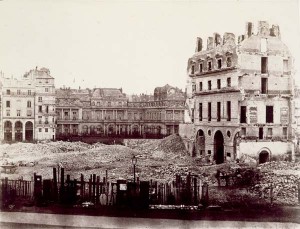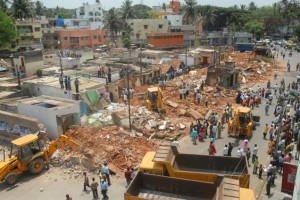It is hard to believe that “developed” cities such as New York City, London, and others in Europe suffered issues of inadequate housing at some point in their history. Perhaps it is the mass commercialization of these cities as places of luxury and ultra-modernity that lets us forget but looking into history reveals a different story. The issue of informal housing has been present since the earliest city but only now that it has reached high levels of population due to mass migrations into cities that it has become a concern.
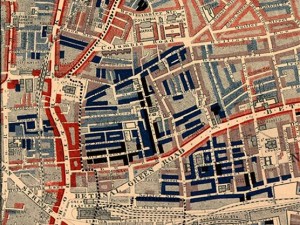
Old Nichol Slum in London’s East End. [3]
As Frederick Engels puts it, “Every city has one or more slums, where the working class is crowded together.” [1] The exact catalyst for mass migration into cities varies throughout history but in the case of many of these developed cities it was the onset of the industrial revolution. Nowhere was this more evident than in London in the late 19th century where industry took over and priority was given to mass production rather than the quality of the living conditions. Factories began to spring up next to residences and the inhabitants of the city became infected with all kinds of diseases brought on by the pollution from these factories. As Mumford states, “The factory became the nucleus of the new urban organism. Every other detail of life was subordinate to it.”[2]
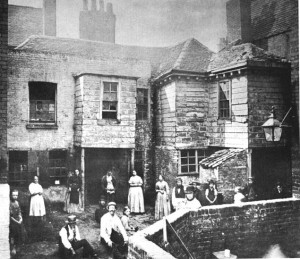
Typical Housing Conditions inside the Old Nichol Slum. [4]
In the global south the outer rims of the city can be deemed the informal and surge as a response to migration from rural life and other factors. The factories in England which can be considered a part of the “formal” were actually the ones who brought the informality to the housing which surrounded it. Furthermore, the informality grew in the center of the city as opposed to the peripheries. The rich were not isolated from the effects of the industry and it became part of their everyday life to adapt to these conditions. The working class homes that already existed had to be redeveloped to the incoming number of new families looking for new work opportunities. Multi Room Apartments that once housed several families turned into single room family homes. The filth that ensued was immense and as Mumford puts it was, “a pith of foulness and filth was reached that the lowest serf cottage scarcely achieved in medieval Europe.” [2]
Dirtiness is an aspect that will forever be attached to the issue of slums. Perhaps it is the informality that seems to make it appear in bad condition or the disorganization that occurs as a result of large groups trying to create functioning livable systems in places that are less than appropriate for housing. The industrialization of England can then be seen as a comparison to the rapid urbanization of India where the desire to expand put at odds in crowded areas the living conditions of the inhabitants. It’s almost as if the form that takes shape in informal areas is a defense mechanism against the desire to growth.
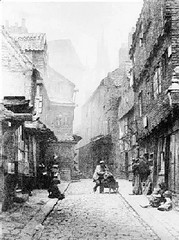
Everyday Life in the London Slum. [4]
The dirtiness in the slums of England was a result of the residue from the nearby factories. However, it seems as if the fault was and still is placed upon the inhabitants of the informal for the deterioration of cities but perhaps many of these individuals need to reflect upon the footprint that their formalized living environment is causing in the city as whole. We many times defend rapid urbanization but if we look at history such as the case of industrialization in England what is considered necessary is not always the best.
1. Desai, Akshayakumar Ramanla. Slums (Bombay, Popular Prakashan [1970]) 15-23
2. Markus, Stevens. Engels, Manchester, and the working class. ( New York, Random House [1974]) 24-33
3. University of Michigan, accessed February 16, 2013, http://www.umich.edu/~risotto/maxzooms/ne/nej34.html
4. Affordable Housing Institute, accessed February 16, 2013, http://affordablehousinginstitute.org/blogs/us/2008/08/how-a-slum-dies-part-1-in-the-19th-century.html
//
//
